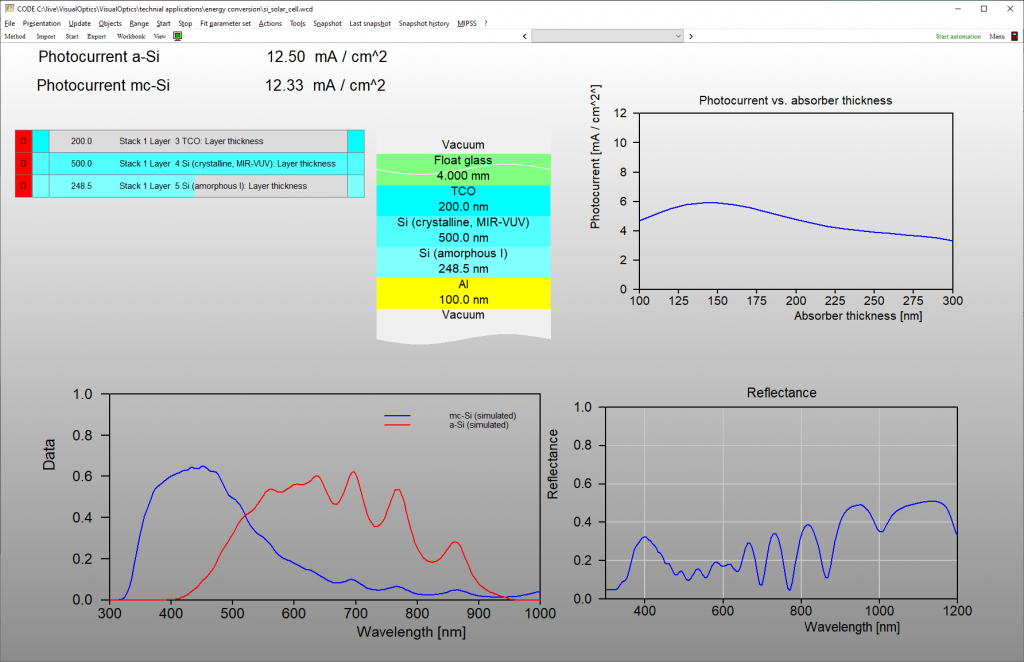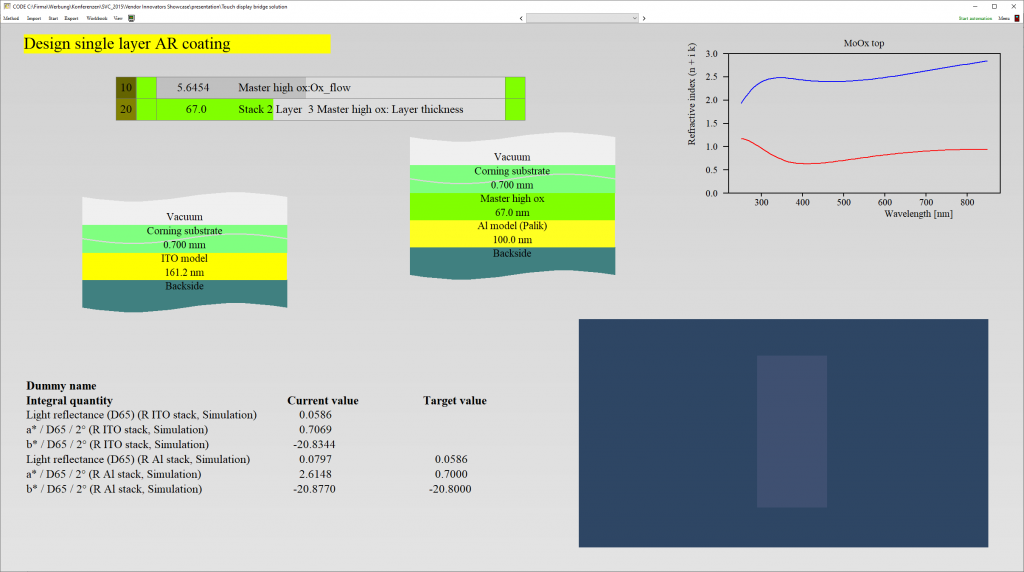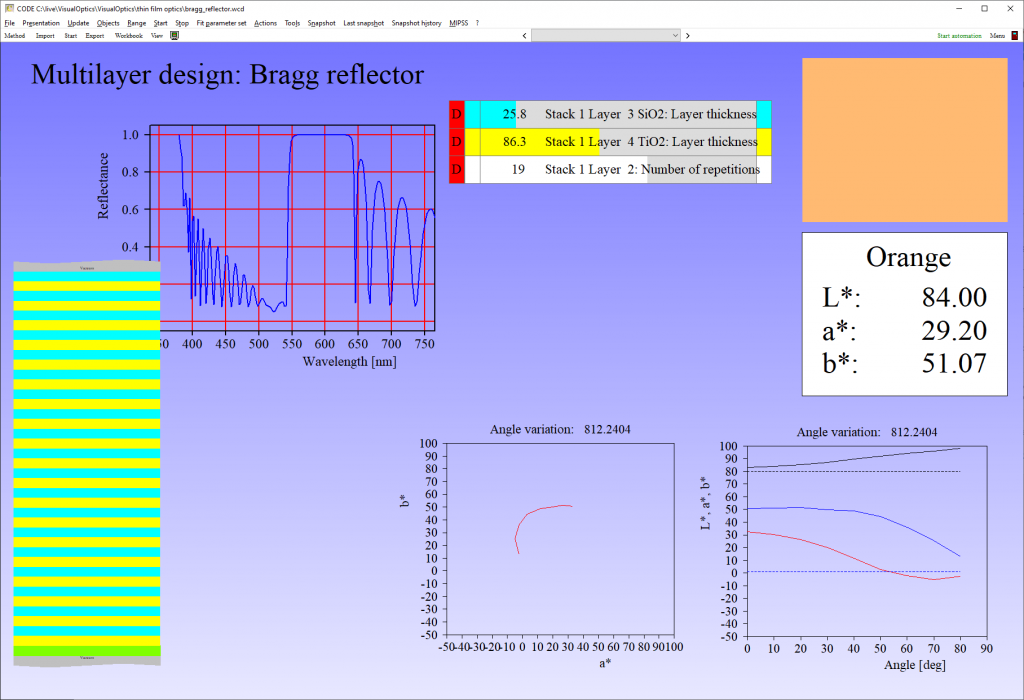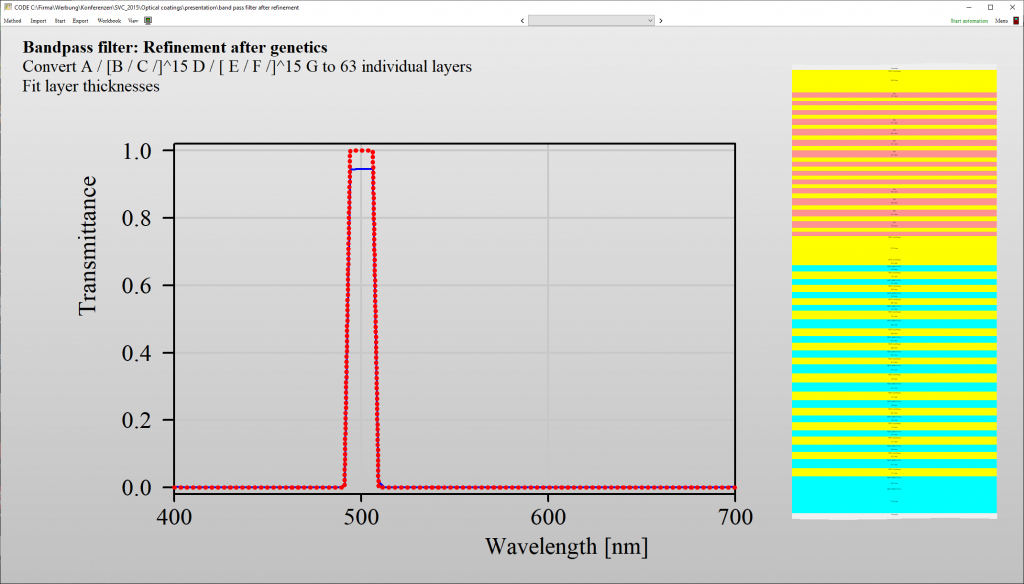Once you know your materials and the deposition rates available in your coater you can start to develop multilayer stacks with wanted properties.
Based on the spectra of the optical model, CODE computes a large number of technical performance data. You can select target values for these quantities and let CODE optimize the thin film stack to achieve the wanted behavior.
Here is an example of a typical glass coating. CODE computes reflectance spectra from both sides, the transmittance and the NIR emissivity. These values are then used to get color coordinates, integral transmission data in the visible (380 … 780 nm) and the full solar range (300 … 2500 nm) and thermal properties (heat insulation) of the glazing product. CODE also has a powerful routine that computes the variation of color with viewing angle. This is important for the design of large buildings.
Here is an example of solar energy conversion. CODE computes the absorbed solar power of an absorber stack that uses a gradient from Al2O3 to Al, with decreasing oxygen concentration from the top to the bottom of the layer. Besides the wanted absorption of solar radiation there is an unwanted power loss by re-emission of light in the NIR. The re-emission depends on the temperature of the absorber. It gets significant in CSP (concentrated solar power) power plants where temperatures are very high.
The conversion of light into electricity can be handled as well. Here is the optical model of a thin film solar cell based on a silicon double layer (micro-crystalline and amorphous).
The next design example is from display technology. The task is to ‘hide’ a highly reflective aluminum contact area within the display. It should look exactly like the main part of the area:
A candidate is a layer of MoOx where both the thickness and the oxygen concentration of MoOx can be optimized. A large stoichiometry range of MoOx has been investigated, and a powerful master model is available. There are only 2 parameters to be optimized, namely the thickness and the stoichiometry parameter. The target is to get the same color over the whole display area. Before the 2 parameter optimization is done the color is clearly different:
Since we have 2 parameters the optimization takes a few seconds only:
This is a large improvement but the aluminum contact is still visible. Since we have the master model we are now in the position to work with 2 MoOx layers which have different optical constants. This increased flexibility is enough to get a perfect solution:
Finally here are some designs involving many layers, typical for optical filters. A Bragg reflector repeats a double layer with high and low refractive index materials many times:
Based on 2 Bragg reflectors you can build a band path filter. For designs like this we recommend the CODE add-on GenetiCode which uses an evolutionary algorithm to optimize the model. The user mainly has to put the problem and pass a list of material candidates to GenetiCode – the software then finds the best solution for the given task.









